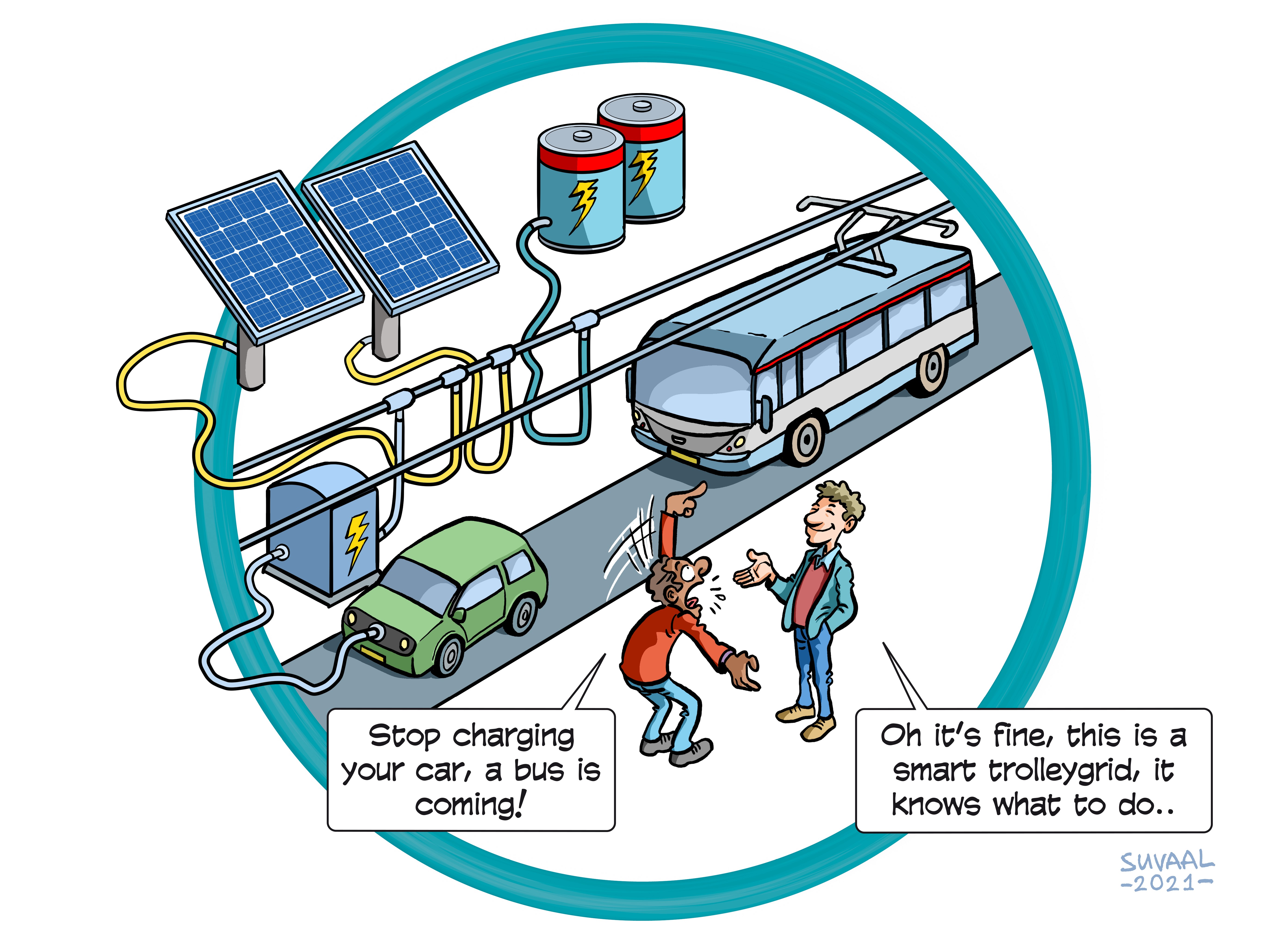Smart Trolley Grid/Trolley 2.0
Research Themes: Energy, Software technology & Intelligent Systems


A TRL is a measure to indicate the matureness of a developing technology. When an innovative idea is discovered it is often not directly suitable for application. Usually such novel idea is subjected to further experimentation, testing and prototyping before it can be implemented. The image below shows how to read TRL’s to categorise the innovative ideas.
Summary of the project
The infrastructure of trolleybus grids is already part of our urban environment and he is looking at how this grid can become a more active part of the city’s electricity network. The trolley grid is divided into electrically-isolated sections, meaning that there is not a single point of origin that electrifies this whole network. Each section is only being used when a trolleybus passes under it, and is overdesigned to handle the improbable worst-traffic case scenarios. Consequently, the trolley grid is both underutilized and oversized. Additionally, the supplied electrical power still comes from fossil fuels in most cities. The researcher is working on creating a smart and more sustainable trolleybus network for the future – a network that is no longer just a load on the city grid that needs to be fed, but an active player grid that can share or even sometimes take over supplying some extra functionalities such as electric vehicles chargers.
Through modelling, simulations, and a cluster of measured trolleybus and trolley grid data, the researcher is exploring various functionalities that could be added or linked to this transportation network such as storage, charging of electric vehicles and integrating solar panels and wind turbines.
What's next?
It would be interesting to look at how In-Motion-Charging buses can fit into this grid as well. IMC buses are buses with a battery on-board that can be charged while the bus is moving, and then operate on battery-mode when the bus leaves from under the catenary. They offer the advantages of both trolleybuses and electric buses.
Also interesting would be to see if non smart-grid, city loads can be integrated into the trolleybus grid, such as street lighting.
In larger cities, research can also be done on the combination of multiple transportation grids such as trams, buses, and metro’s.
Contribution to the Energy transition?
Electric transportation networks, solar energy, and electric vehicle chargers are all important elements of the sustainable electrical grid of the future. However, these systems are not always technically and/or financially feasible in every urban environment. Combining these systems together, counter-intuitively, actually makes them more feasible and less costly, and offers cities a more sustainable grid with multiple functionalities.
ir. Ibrahim Diab
dr. ir. Gautham Ram Chandra Mouli
prof. dr. Pavol Bauer
Faculties involved
- EEMCS
